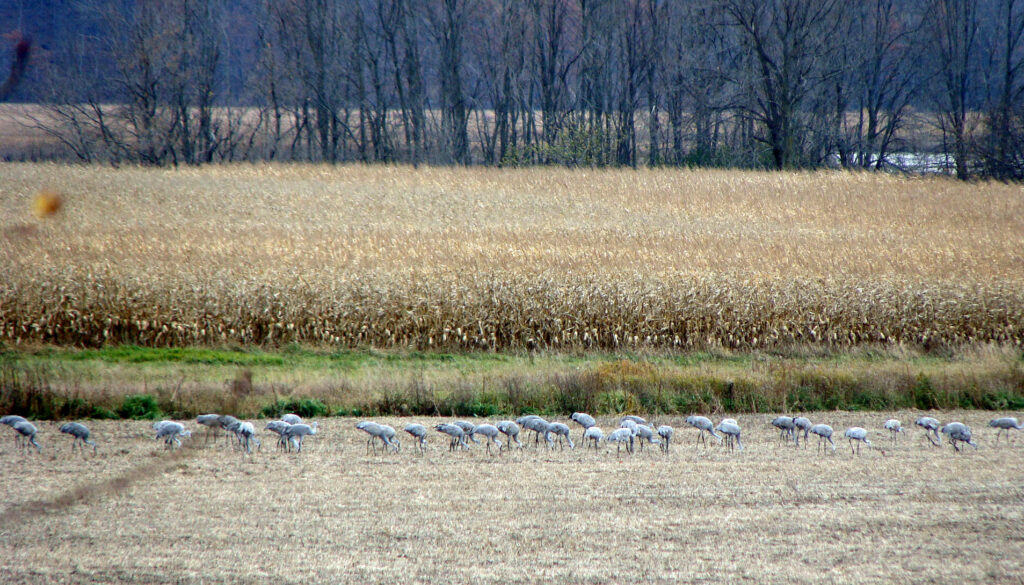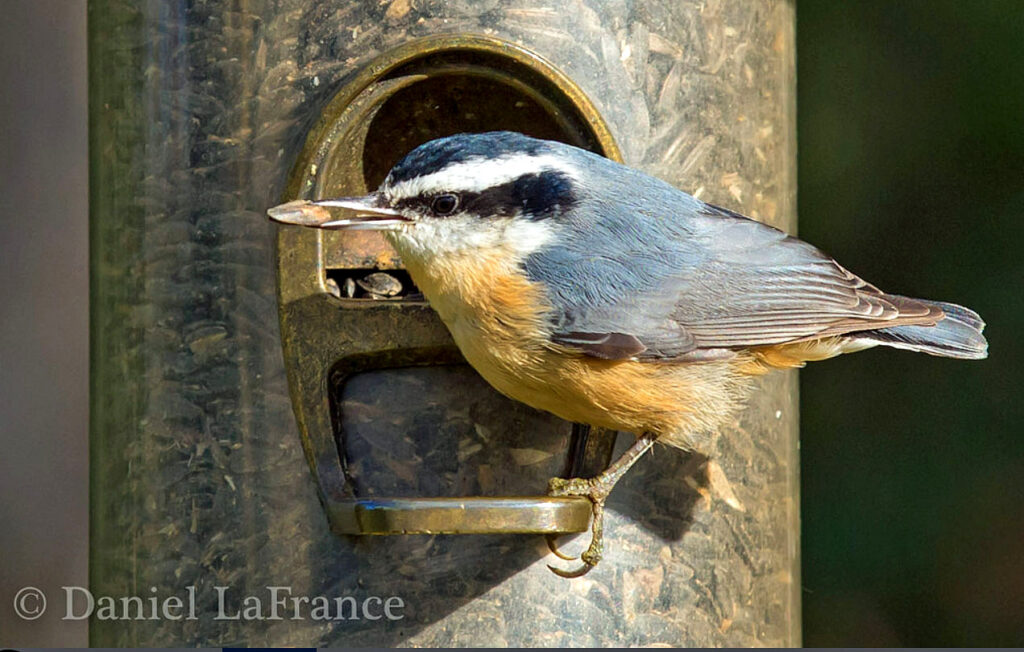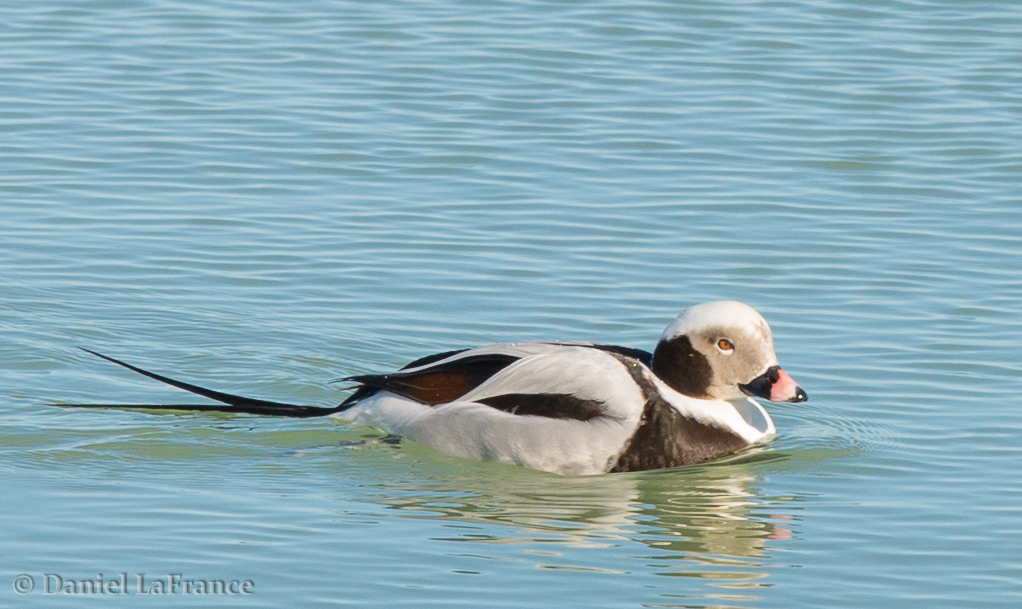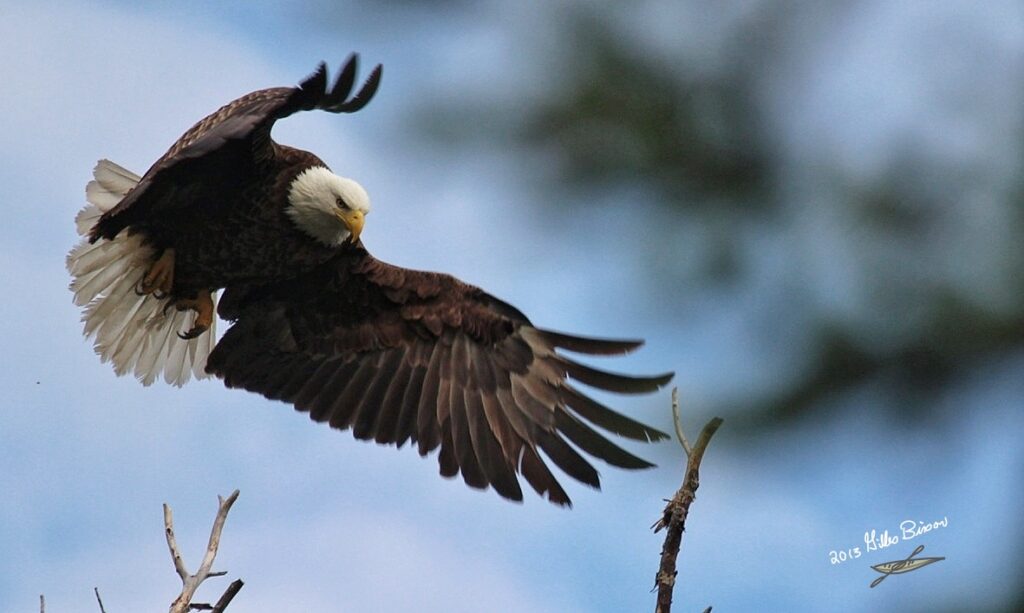Prince Edward County, Ontario, Canada
What Bird Species Can We Expect to See in January?
Although we can look at just about every month of the year as one in which bird species are either coming or going, January seems to be the only month of the year in which nothing arrives or departs. The rule, however, may be broken by the arrival of some species of northern finches, residents of the boreal forests that have been forced southward from their boreal haunts due to food shortages. By and large, what we have in the Quinte area in January are the permanent residents and those winter visitors that have already established themselves for the season. With them, food is the all important concern, and movements at this season are dictated solely by the food supply. In fact, food, rather than temperature, is the most important factor in a bird’s life during this month. The crop of wild fruit and seeds in the north this season for the most part in excellent supply, so we are not expecting any irruptions of boreal species this winter, although a few like EVENING GROSBEAKS have started to show up, but the winter is young yet. One, however, can always depend on a few other surprises such as the occasional migratory species that lingered due to the warm, rainy weather in December, like GREAT BLUE HERON, NORTHERN FLICKER and SANDHILL CRANES, all of which were seen in the local area regularly well into late December. In fact, there were some 160 SANDHILL CRANES feeding together in a corn field on Big Island in early December. The photo below shows some 50 SANDHILL CRANES that appeared earlier, in November of 2014. They seem to love Big Island corn.
In the Bay of Quinte region this month we can expect to see SNOW BUNTINGS and AMERICAN TREE SPARROWS which are regulars every winter despite any preseason food shortages in the north. Present from the north this winter in small numbers so far are the ROUGH-LEGGED HAWKS, easily identified by the blotched belly and black “wrist” marks on the underwings. Both colour morphs – light and dark – are present. They also have the curious habit of hovering over a field on beating wings, much like a kingfisher. This winter, there seems to be a few NORTHERN SHRIKES around the countryside, also BARRED OWLS. The SNOWY OWL southward movement continues in eastern Ontario, and there have been numerous sightings of this northern resident in the Bay of Quinte region this winter so far.

As the temperature continues to drop this month in the Quinte area, local bird feeders should become busier through January. Permanent residents such as DOWNY and HAIRY WOODPECKERS, WHITE-BREASTED NUTHATCHES and BLACK-CAPPED CHICKADEES will likely increase in number and their visits may be more frequent as food sources become covered in snow. In recent years, RED-BREASTED NUTHATCHES have become increasingly regular at some bird feeders in the county.

This is the month to keep your eyes peeled for other birds that normally migrate, but often turn up in the Quinte area during January, sometimes finding their way to your feeder. A few interesting species beyond the wintering EASTERN BLUEBIRDS, a species that frequently winters over in little groups of a half dozen or so, but not in the large numbers being encountered this winter. You never know just what might turn up. WHITE-THROATED SPARROWS seem to present in the county in good numbers this winter and many of these are visiting local feeders, a few WHITE-CROWNED SPARROWS as well, and the occasional FOX SPARROW. Keep your eyes open, too, for other special feeder guests such as NORTHERN MOCKINGBIRD and CAROLINA WREN. Surprises abound everywhere.

As the lakes and bays succumb to lower temperatures, waterfowl watching becomes more difficult; however, open water at locations such as Prince Edward Point may still produce rewards given the incredibly high populations of LONG-TAILED DUCKS and WHITE-WINGED SCOTERS that traditionally are observed there in late December. Other locations such as Wellington, Huyck’s Point and the waters off the Stinson Block, immediately west of Consecon, can also be quite productive in January. At this time of the year, one never knows what might inexplicably turn up. And don’t be alarmed if you should see a BALD EAGLE. They are fairly common now in the county during most winters and at least a half dozen pairs have become established as a nesting species in the County since 2017. Up to a dozen or more are regulars along Adolphus Reach between Glenora and Prinyer’s Cove. Check them over carefully, as GOLDEN EAGLES have been known to turn up here too in the winter.

Most important, don’t spend all of January indoors watching the guests at the bird feeder through the kitchen window. Put on lots of clothes and snowshoe or cross country ski to your favorite birding area and watch our winter birds in their natural surroundings. You may be surprised what you will find out there.
As always, I am interested in hearing what you see at your feeder as well as in your travels throughout the Quinte area this winter. You can e-mail me right from this LINK. Although I have retired the weekly Quinte Area Bird Report, I am always interested in hearing about your sightings throughout the Bay of Quinte area.